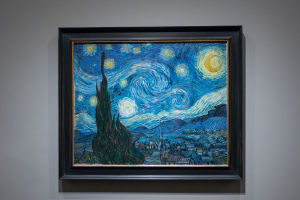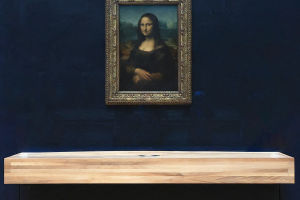Ever stood in front of a painting by Leonardo da Vinci or Michelangelo and wondered, "How did they do that?" The art of the Renaissance isn't just beautiful — it's almost magical.
The realism, light, depth, and expression in these masterpieces seem far ahead of their time. But behind the awe lies technique — carefully guarded, developed through science, experimentation, and relentless practice.
In this article, we'll uncover the secret methods Renaissance masters used to create paintings that still mesmerize us today.
The Power of Perspective
One of the most revolutionary techniques of the Renaissance was linear perspective. Before this innovation, paintings often appeared flat or disorganized. Then came Filippo Brunelleschi, an architect who in the early 15th century devised a mathematical method for creating the illusion of depth.
Artists like Masaccio and Raphael adopted this method to draw viewers into their scenes. By using a vanishing point — where all parallel lines appear to converge — they made buildings, streets, and rooms seem three-dimensional. This gave Renaissance art a realism never seen before.
Chiaroscuro: Painting with Light and Shadow
Renaissance painters understood that light defines form. Chiaroscuro — an Italian word meaning "light-dark" — was a technique that used strong contrasts between light and shadow to model three-dimensional forms on a two-dimensional surface. Leonardo da Vinci mastered this method, especially in works like "The Madonna of the Rocks."
Rather than outlining shapes with hard lines, he used gradual shading to make his subjects emerge naturally from their surroundings, creating a lifelike softness and depth.
Sfumato: The Soft Blur of Mystery
Another signature technique of da Vinci was sfumato, which means "to evaporate like mist." Instead of sharp transitions between colors and tones, he blurred the edges, blending them smoothly to eliminate harsh lines. This gave his figures a more natural, almost dreamy appearance.
The Mona Lisa is the perfect example — her enigmatic smile owes much of its mystery to sfumato. Leonardo described this method in his notebooks, emphasizing that the human eye does not see hard outlines in real life, but rather subtle changes in light.
Underpainting and Layering
Renaissance masters rarely completed their paintings in a single stage. They often began with an underpainting (often in monochrome) that established the values — light and dark areas — of the piece. This was called grisaille. Once the values were set, artists added transparent layers of color called glazes to build up tone and richness.
This layering created depth and luminosity that flat, single-layer painting could not achieve. Titian and Raphael used this method to give their work a glowing, almost inner light.
Secrets of Pigment and Medium
The brilliance of Renaissance color came from not only technique but also materials. Artists ground their own pigments from natural minerals and plants. They mixed these with binders like egg yolk (tempera) or oil (linseed oil) to create their paint.
Oil paint, which gained popularity in the 15th century, allowed for more flexibility, slower drying times, and richer blending than tempera. This gave artists such as Jan van Eyck and Leonardo da Vinci greater control over texture, tone, and detail.
Human Anatomy: Studied in Depth
To paint the human form accurately, Renaissance artists didn't just guess — they studied anatomy intensely. Leonardo da Vinci performed dissections and filled countless sketchbooks with detailed drawings of muscles, bones, and proportions.
Michelangelo's sculptures and paintings, including The Creation of Adam, reveal his deep understanding of the body's structure. These artists aimed to reflect the ideal beauty and balance of the human form, based on ancient Greek and Roman principles but grounded in direct observation and science.
Innovative Use of Composition
Renaissance artists were masters of composition — how elements are arranged within a piece. They used the golden ratio, a mathematical proportion found in nature, to create visually pleasing layouts. They also used triangles to organize subjects, guiding the viewer's eyes naturally through the painting.
For example, Raphael's Madonna of the Meadow uses a triangular composition to connect the Madonna and two children with harmony and stability.
Fresco Painting: Art on Walls
Not all Renaissance art was on canvas. Fresco painting, popularized by artists like Michelangelo and Giotto, involved applying pigments directly onto wet plaster. This technique required speed and precision because the paint had to be applied before the plaster dried. The result?
The colors became part of the wall, making the artwork long-lasting and vibrant. Michelangelo's ceiling of the Sistine Chapel is a breathtaking example of fresco work on a monumental scale.
Scientific Tools for Artistic Goals
The Renaissance wasn't just an artistic movement — it was also a scientific revolution. Artists used geometry, optics, and even mechanical devices like the camera obscura to aid in their work. The camera obscura projected an image onto a surface, allowing artists to trace accurate outlines and proportions.
This blending of art and science marked the Renaissance as a truly multidisciplinary period, where innovation in one field enriched the other.
Symbolism and Hidden Messages
Many Renaissance paintings were not just technically brilliant — they were also full of meaning. Artists embedded symbols, allegories, and hidden details to convey moral, philosophical, or social ideas. Botticelli's Primavera, for example, includes mythological figures and floral symbols that represent themes like love, rebirth, and virtue.
Decoding these layers adds a new dimension to appreciating their works.
The Legacy Lives On
Though centuries have passed, the techniques of the Renaissance still influence artists today. Whether it's in the work of modern realist painters, digital illustrators, or architects, the legacy of Renaissance masters continues to inspire. Their blend of scientific thinking, close observation, and artistic innovation shaped a golden age of creativity.
Ready to See the Art Differently?
Next time you visit a museum or see a Renaissance painting online, don't just admire the beauty — look closer. Notice the play of light and shadow, the precise geometry, the emotion in the figures.
These masterpieces were created not only with brushes and paint, but also with knowledge, science, and carefully developed techniques passed down through time. Which technique surprised you the most? Let us know — your curiosity keeps the art alive.


